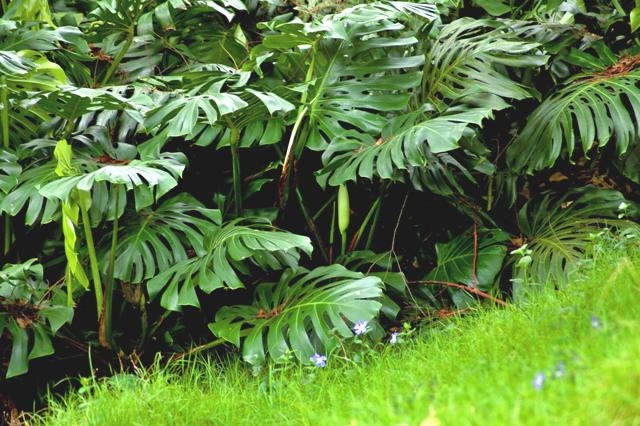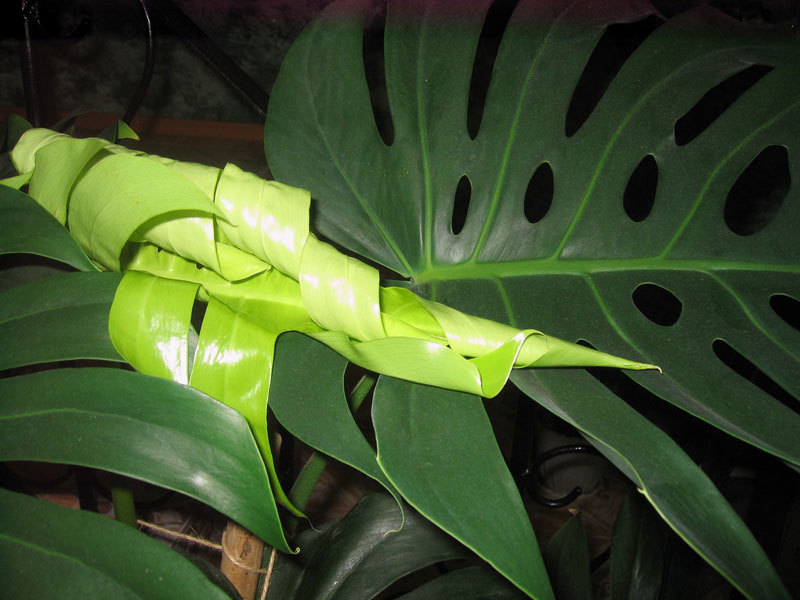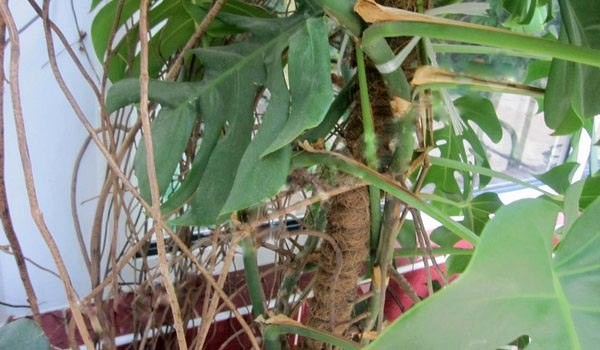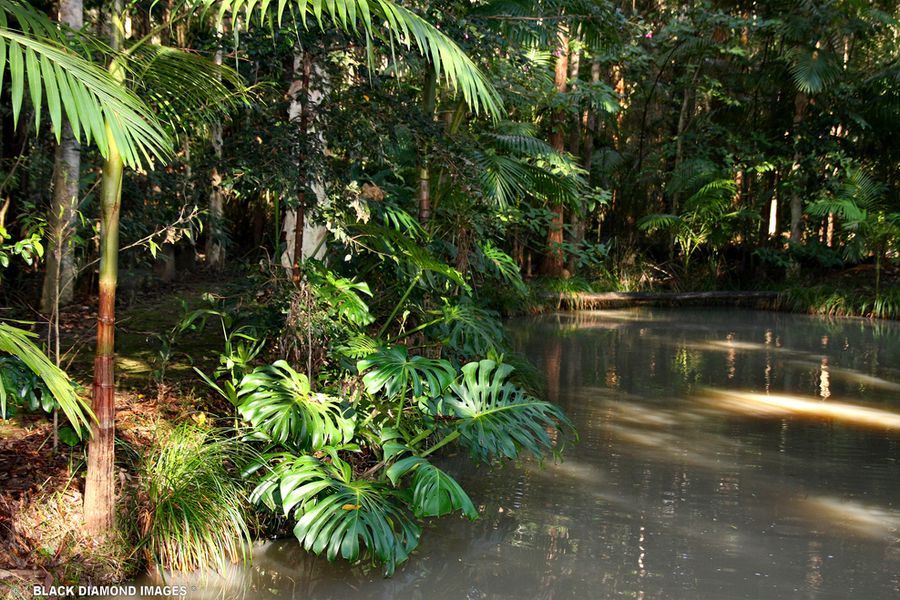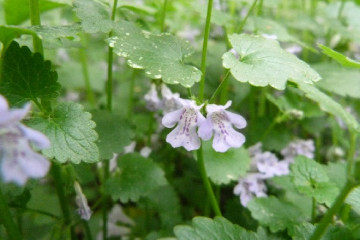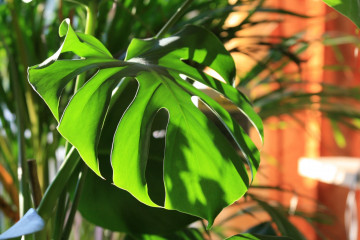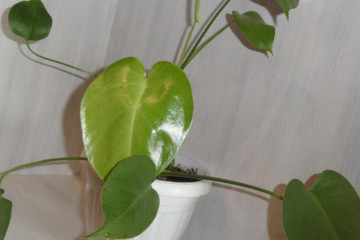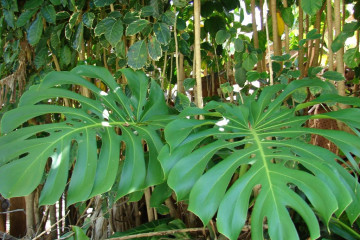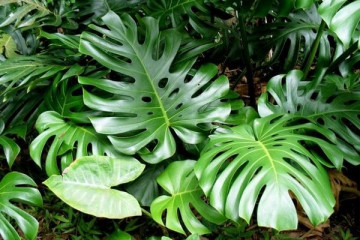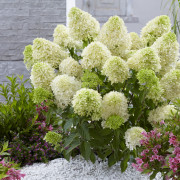Where does monstera grow in nature - the birthplace of the plant
Content:
Monstera is one of the amazing exotic plants. Despite the fact that indoor cultivation of this flower is very popular, wildlife is still a more acceptable environment for it. The article tells about what a monstera looks like and about the features of its flowering, as well as about the types and types of this culture.
What is monstera
At the beginning of the 18th century, there were rumors in Europe about large plants that are found in rainforests and can kill people. Eyewitnesses said that after the attack of these flowers, only bones remained from the living creature, hanging from the plant. These stories are partly true. Tourists mistook the aerial roots of the plant for terrible tentacles. While weaving downward, they could grow through the human body. Because of such stories, the monster began to be called the Beast. But where the monstera lived, no one could tell. People were afraid to go to the jungle.
At first, scientists bred a new genus Philodendron from the plant, but in 1765 the monstera was singled out as a special type of culture. The first species of attractive monstera were brought to England in 1754. Where the monstera grows in South America, this species was accurately described only a century later by the Swedish botanist Frederick Liebman, who published a monograph on the cultures of South America in 1849.
The plant has huge carved burdock leaves and sturdy stems.
There were legends about the plant's involvement in the deaths of travelers. Everything turned out to be much simpler. People who got lost in the jungle died under the huge bushes of Monstera, and over the years the vines penetrated their bodies, and it looked terrible, as if the plant had killed a person. Therefore, now tourists do not arrange themselves for the night or shelter in the bushes of this plant.
Brief description of the monstera plant: botanical features
This flower belongs to the Aroid species. The name translated into Russian sounds like "monster". This plant belongs to a variety of ever-flowering vines, which contains about 25 species. The monstera flower in nature is similar to a very large and luxurious epiphytic plant, which has a well-developed root system.
Aerial roots are formed at leaf nodes opposite the stems. Leaves are marsh green, shiny, oval or round, up to 50 cm in diameter, are on long petioles - up to 35 cm, fresh leaves are intact, and only with age do cuts appear on them. When the leaves first grow, they are rolled into a tube and have a pale green color.
The size of the stem in the wild can reach up to 25 m, and the leaves themselves - up to 85 cm. Young leaves are smooth, formed on long petioles. There are many aerial roots on a large stem, with the help of which the plant clings to everything that stands nearby. The inflorescence contains an edible fruit, covered with a white blanket.
On which continent does monstera grow
The native land of the plant is usually considered to be Central, South America and western India. But on what continent the monstera is growing now, it's hard to say. Almost everywhere these plants were exported to different countries.
Varieties of monstera
The most common are three types of this plant:
- Monstera gourmet... At a young age, its leaves are smooth, in the form of a heart or an oval, and in an adult flower they grow up to 80 cm in diameter. At home, the gourmet monstera does not grow more than 2 m, and in greenhouses - 10 m.If you take care of it correctly, large fruits are formed, the length of which is 20 cm and the width of 15 cm.When the berry ripens, you can taste it, to taste it resembles a mixture of banana and pineapple. But you need to peel the fruit before eating.
- Borziga... It grows mainly in Mexico, the leaves are small feathery, up to 25 cm in diameter, suitable for apartment maintenance. Compared to Delicatessen, it has very thin stems and grows quickly.
- Oblique... It is also called expilata or sickle-shaped. It grows mainly in the humid forests of Brazil and Guatemala. The leaves are round, long and narrow. If the air in the room is very dry, then the leaves become small. The recommended breeding area is a damp greenhouse. It is in it that internodes become short, and the leaves reach up to 30 cm in size.
Monstera habitat in nature
Monstera's habitat is the southern part of America, or rather the tropics. At home, it is quite difficult to create such an atmosphere for a plant. But if you adhere to the rules of care, give the flower everything you need, then it is quite possible to grow it with your own hands, but it still will not bloom.
How does a monstera behave in nature
Aerial roots constantly creep from the plant, and the cut leaves are very large. The inflorescences look like thick oval fruits, the flower itself is bisexual.
Accessory roots are necessary for the monstera to obtain additional minerals. Since this plant has high humidity in the wild, this will be a method of acclimatizing to the environment. Under natural conditions, the plant grows up to 250 m.
Monstera leaves are very poisonous. They contain needle formations, if they get on the eyes or mucous membranes of a person, they will cause severe irritation. This is one of the reasons why the plant is considered a monster and a killer.
Many myths are associated with this flower. The most common:
- Energetic vampire... According to this myth, the flower produces carbon dioxide at night, which can cause suffocation. It is believed that a plant, like a vampire, feeds on human energy, which makes it lose strength. But as the ancient scientists in the science of Feng Shui say, these cultures love only negative energy. Monstera absorbs electromagnetic radiation, so it is often placed near household appliances.
- Virulence... According to some legends, a large monstera palm is a poisonous flower. In reality, a plant that blooms in gardens forms inflorescences on itself. They must be cut, it is in them that there is a part of the toxic substance. Many people try them, but it is not necessary to do this, as you can feel a burning sensation in the mouth, due to the large amount of potassium. But since at home the big monstera does not bloom, then there is no need to be afraid.
When monstera blooms
Flowering occurs mainly from mid-summer. In a normal habitat, an inflorescence forms on the plant in early spring. The process of flowering and ripening of the fruit takes about 10 months.
Why is the monstera "crying"
There are many reasons why a monstera cries.Sometimes the plant cries when it is short of water, thereby indicating that it is time to water.
Also, when the rain approaches, the monstera cries, water drops appear on the edges of the leaves. If watering is plentiful, with the help of tears, the flower gets rid of excess liquid.
If you decide to breed this plant yourself, first you should find out on which continent Monstera grows. In room conditions, it is necessary to create the climate to which it is accustomed to the maximum. A lot of moisture and sun is the main thing for proper cultivation.
In the home habitat, the flower is more susceptible to various pests and diseases than in the wild. The most dangerous for him are chlorosis or spider mites.
And this is true, at home Monstera lives for about 5 years, this is with perfect care. In the wild, life reaches up to 30 years, this is a very big difference. Therefore, flower growers do not recommend keeping such plants at home, since they will not live long.
Many legends and stories are associated with the Monstera flower, many of which have even been confirmed. But no one will know the whole truth, because the events took place more than three centuries ago. However, one way or another, one cannot but emphasize the beauty and luxury of this wild flower. But in order to truly understand what a monstera is, you need to see it at least once. This beauty cannot be forgotten.
